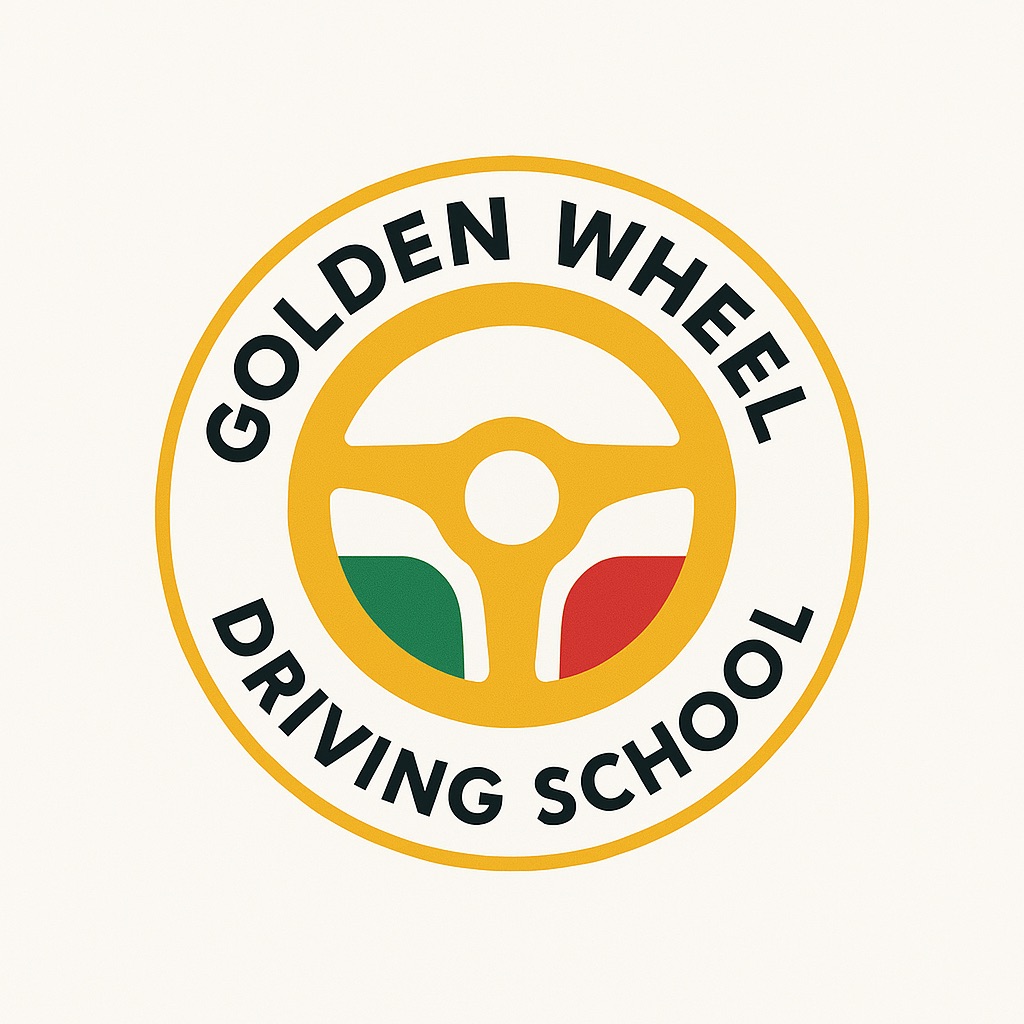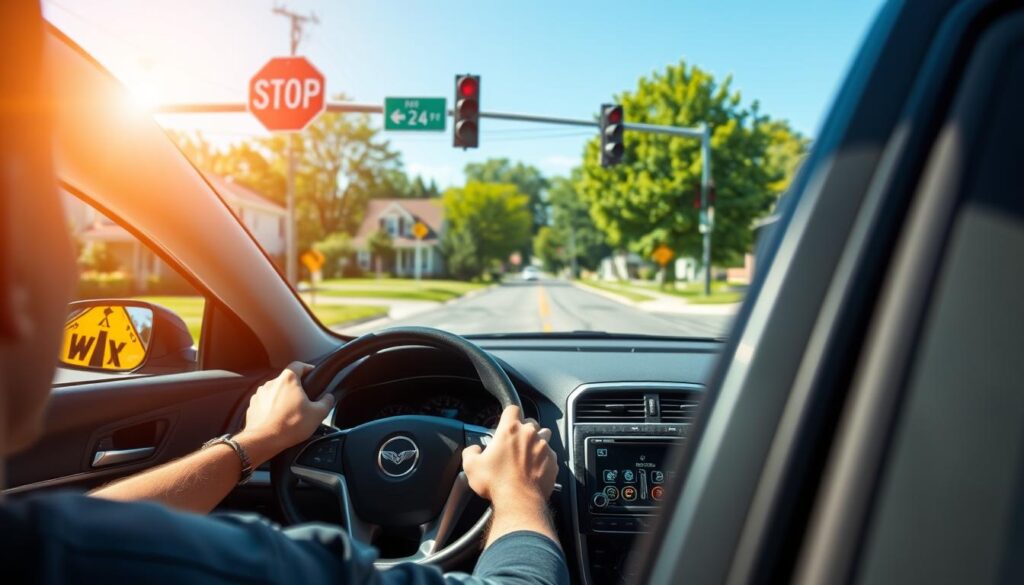distracted driving tips for teens
As a teen driver, staying safe on the road is a top priority. With the increasing number of distractions available, it’s easy to get sidetracked while driving. Here are seven tips to help you stay focused and avoid accidents.

First, put away your phone while driving. Avoid texting, browsing, or using your phone for any other purpose while behind the wheel. This will significantly reduce the risk of being distracted by your device.
Second, minimize interactions with passengers that could divert your attention from the road. Avoid lengthy conversations or engaging in activities that might take your eyes off the road.
Third, be aware of your surroundings and the road conditions. Anticipate the actions of other drivers and pedestrians, and be prepared to react to unexpected situations.
Fourth, avoid eating or drinking while driving, as this can be a significant distraction. Try to finish your meal or snack before getting behind the wheel.
Fifth, refrain from using social media or checking notifications while driving. Keep your phone out of reach or use a hands-free system to minimize distractions.
Sixth, keep your vehicle’s infotainment system simple and avoid complex operations while driving. Use voice commands or simple controls to minimize distractions.
Seventh, get enough rest before driving, and avoid driving when tired. Fatigue can be a significant distraction, so make sure you’re well-rested before getting behind the wheel.
Key Takeaways
- Put away your phone while driving to minimize distractions.
- Avoid lengthy conversations with passengers.
- Be aware of your surroundings and road conditions.
- Refrain from eating or drinking while driving.
- Use a hands-free system to minimize distractions.
- Keep your vehicle’s infotainment system simple.
- Get enough rest before driving.
The Alarming Reality of Teen Distracted Driving
The statistics on teen driving accidents are alarming. According to recent studies, distracted driving is a leading cause of accidents among teenagers. The numbers are stark: in the United States alone, thousands of lives are lost each year due to distracted driving.
Distracted driving encompasses a range of behaviors that divert a driver’s attention away from the road. Common causes of distraction include texting, talking on the phone, eating, grooming, and interacting with passengers. These distractions can significantly impair a driver’s ability to react to hazards on the road.
Current Statistics on Teen Driving Accidents
Recent data highlights the severity of the issue. In the US, teen driving accidents are often linked to distracted driving. The consequences can be devastating, not just for the drivers involved but also for their families and the community at large.
Statistics show that teen drivers are more likely to be involved in accidents due to distractions. The most common distractions include using a phone for texting or browsing, adjusting the GPS or music playlist, and engaging in conversations with passengers. These actions can significantly increase the risk of an accident.
Common Causes of Distraction for Young Drivers
Young drivers are particularly susceptible to distractions. The most common distractions for this age group include social media usage, texting, and interacting with passengers. These distractions can be particularly hazardous when combined with inexperience behind the wheel.
To minimize risks, it’s essential for teen drivers to be aware of these potential distractions and take steps to mitigate them. This includes putting away their phones while driving, avoiding eating or grooming while behind the wheel, and limiting conversations with passengers to essential information only.
The Impact on Families and Communities
The consequences of distracted driving accidents can be far-reaching, affecting not only the drivers involved but also their families and the community. The emotional and financial toll of these accidents can be significant.
Families and communities are often left to deal with the aftermath of these accidents, including medical expenses, loss of income, and emotional trauma. By understanding the risks associated with distracted driving, teen drivers can take proactive steps to reduce their exposure to distractions and stay safe on the roads.
By following these guidelines and tips, teen drivers can significantly reduce their risk of being involved in a distracted driving accident. By being aware of the potential distractions and taking steps to minimize them, young drivers can become safer, more responsible drivers.
Why Teen Drivers Are Particularly Vulnerable
Teen drivers face unique challenges on the road due to their inexperience, ongoing neurological development, and the social pressures they encounter. These factors contribute to a higher risk of being distracted while driving, which can have serious consequences.
Inexperience and Developing Driving Skills
New drivers often lack the experience and maturity that comes with age and practice. As a result, they are more prone to making mistakes and being distracted while driving. Inexperienced teen drivers may not have fully developed their driving skills, which can lead to a higher risk of being involved in an accident.
Neurological Development and Risk Assessment
The adolescent brain is still undergoing significant development, particularly in areas responsible for impulse control, risk assessment, and decision-making. Teen drivers may be more likely to engage in risky behaviors, such as speeding or following too closely, due to their stage of neurological development.
Social Pressures Unique to Teen Drivers
Teenagers are often influenced by their peers and the social environment, which can result in a higher likelihood of engaging in distracted driving behaviors. The presence of friends in the vehicle can be a significant distraction, as conversations, laughter, and other social interactions can divert attention away from the road.
By being aware of these factors and taking steps to mitigate their impact, teen drivers can reduce their vulnerability to distractions and develop safer driving habits. This involves being mindful of the potential risks, developing strategies to minimize distractions, and cultivating a safety-first mindset while driving.

Distracted Driving Tips for Teens: The Foundation for Safety
As a teen driver, staying safe on the road is a top priority. With the increasing number of distractions available, it’s easy to get sidetracked. To help you stay focused, we’ve compiled a list of tips to minimize distractions and ensure a safe driving experience.
Visual, Manual, and Cognitive Distractions Explained
Distractions while driving can be categorized into three main types: visual, manual, and cognitive. Visual distractions occur when something catches your eye, such as a billboard, a pedestrian, or another vehicle. Manual distractions involve taking your hands off the wheel, like when you’re eating, adjusting the radio, or using your phone. Cognitive distractions, on the other hand, occur when your mind is preoccupied with something other than driving, such as daydreaming or thinking about something else.
The Science of Reaction Time and Attention
Research has shown that distractions can significantly impact reaction time and attention. When you’re distracted, your reaction time slows down, and you’re more likely to be involved in an accident. The science behind this is rooted in how our brains process information. When you’re driving, your brain is constantly processing visual and auditory information, making decisions, and reacting to the environment. Distractions can disrupt this process, making it harder to focus on the road.
Building a Safety-First Mindset
To minimize distractions and stay safe on the road, it’s essential to cultivate a safety-first mindset. This involves being aware of potential distractions, taking steps to mitigate them, and developing good driving habits. By doing so, you can significantly reduce the risk of being involved in an accident. A safety-first mindset is not just about avoiding distractions; it’s also about being proactive and anticipative in your driving.
Tip 1: Create a Phone-Free Driving Zone
To minimize distractions while driving, consider the following tips:
Effective Phone Storage Solutions
Store your phone in a secure location, such as a phone mount or storage solutions, to reduce the temptation to interact with it while driving.
Setting Up Do Not Disturb While Driving
Activate your phone’s “Do Not Disturb” mode to silence notifications and calls while driving.
Apps That Block Notifications and Calls
Utilize apps like “TrueMotion” and “LifeSaver” to minimize distractions while driving.
Parent-Teen Agreements About Phone Use
Establish clear guidelines with your teen regarding phone use while driving.
Tip 2: Master Pre-Drive Preparation
To minimize distractions while driving, it’s crucial to prepare before hitting the road. Here are some tips to help you master pre-drive preparation.
Before starting your journey, take some time to plan your route. Utilize GPS navigation systems or map out your trip to avoid last-minute decisions that could divert your attention from the road.
Route Planning and GPS Setup Before Starting
Effective route planning is essential for a safe and enjoyable drive. Consider using GPS navigation systems or mapping apps that provide turn-by-turn directions. These tools can help you anticipate and prepare for upcoming road conditions, intersections, and turns, reducing the likelihood of being caught off guard.

Adjusting Seats, Mirrors, and Controls
Adjusting your vehicle’s settings before driving can significantly reduce distractions. Ensure that your seat, mirrors, and controls are adjusted to comfortable positions, allowing you to focus on the road ahead. Avoid fiddling with controls or adjusting your seat while driving, as this can be a significant distraction.
Creating the Perfect Driving Playlist
Listening to music or podcasts can be a great way to enhance your driving experience. Create a playlist that is engaging and enjoyable, but avoid the temptation to change tracks or adjust the volume while driving. Consider using a music streaming service or a playlist app that allows you to control the music without having to interact with the interface while driving.
Emergency Contact Information and Resources
Make sure you have essential emergency contact information readily available. Program important phone numbers, such as your emergency contact or roadside assistance, into your phone or GPS device. Having this information easily accessible can help you respond quickly in case of an emergency, reducing the likelihood of being distracted by having to search for it while driving.
Tip 3: Establish Passenger Boundaries
## Tip3: Establish Passenger Boundaries
Establishing boundaries with passengers is crucial for safe driving. As a teen driver, it’s essential to minimize distractions and stay focused on the road.
### Communicating Expectations to Friends
When driving with friends, it’s vital to communicate your expectations clearly. Let your friends know that you need to stay focused on driving. You can do this by setting clear expectations before you start driving. Inform them that you will not be engaging in distracting conversations or activities while driving.
### Strategies for Handling Distracting Conversations
To handle distracting conversations effectively, consider the following strategies:
1. Ask your friends to refrain from distracting you: Politely ask your friends to avoid engaging in conversations that might distract you while driving.
2. Use a hands-free system: Utilize a hands-free system or a voice assistant to minimize manual distractions.
3. Keep conversations brief: Keep conversations with your passengers brief and avoid lengthy discussions while driving.
### Understanding Graduated License Passenger Limits
Familiarize yourself with the passenger limits imposed by your graduated license. Understand the rules and regulations regarding the number of passengers you are allowed to carry.
#### When to Speak Up as a Passenger
As a passenger, it’s essential to speak up when you witness potentially hazardous or distracting driving behaviors. If you notice your driver engaging in risky behavior, don’t hesitate to speak up.
By following these guidelines and setting clear boundaries with your passengers, you can minimize distractions and stay safe on the road.
Tip 4: Organize Your Vehicle for Distraction-Free Driving
## Tip4: Organize Your Vehicle for Distraction-Free Driving
### Essential Car Organization Products
To minimize distractions while driving, it’s crucial to maintain a clutter-free and organized vehicle. Various car organization products can help achieve this. Consider investing in storage bins, dividers, and organizers specifically designed for your vehicle’s make and model. These products can help keep your belongings tidy and within reach, reducing the likelihood of distractions while driving.
### Securing Loose Items and Potential Distractions
Loose items in your vehicle can be a significant source of distraction. Ensure that all items are securely stored and won’t become projectiles in the event of sudden braking or a collision. Use storage solutions like cargo nets, dividers, or compartments to keep items secure and out of the way.
### Creating Easy Access to Necessities
Make sure that essential items, such as your phone, wallet, or snacks, are easily accessible while driving. Avoid placing these items in hard-to-reach locations, such as under the seat or on the floor. Instead, use organizers or storage solutions that allow you to access these items quickly and safely.
#### The 5-Minute Pre-Drive Safety Check
Before starting your engine, take a few minutes to conduct a quick safety check. Ensure that your vehicle is in good working condition, and all necessary items are within easy reach. This simple habit can help reduce distractions and promote safe driving practices.
By following these tips and maintaining a distraction-free driving environment, you can significantly reduce the risk of accidents and stay focused on the road.
Tip 5: Eliminate Eating and Multitasking Behind the Wheel
Eating while driving is a common habit among drivers, but it poses significant risks. When you eat or multitask while driving, you’re not only putting yourself at risk, but also your passengers and other road users.
The Hidden Dangers of In-Car Dining
In-car dining can be particularly hazardous. It involves handling food, drinks, and utensils, which can be distracting. When drivers are not focused on the road, their reaction time slows, and the risk of being involved in a crash increases.
Common Multitasking Habits to Avoid
- Avoid eating while driving, as it can lead to accidents.
- Refrain from using your phone or engaging in conversations that take your eyes off the road.
- Minimize distractions by avoiding complex or messy foods that require a lot of handling.
Planning Regular Breaks on Longer Drives
On long trips, it’s essential to take regular breaks to rest and recharge. This helps in reducing driver fatigue, which is a significant factor in many accidents.
Safe Alternatives for On-the-Go Teens
For teenagers who are always on the go, there are several safe alternatives to eating while driving. Consider preparing your meals in advance, and store them in a safe and accessible location within your vehicle. You can also plan your breaks in advance to minimize the need for in-car dining.
| Safe Food Options | Preparation Tips |
|---|---|
| Prepare meals in advance | Store food in a safe location |
| Avoid messy or complex foods | Plan your breaks in advance |
By following these tips, you can significantly reduce the risks associated with eating and multitasking while driving, making the roads safer for everyone.
Tip 6: Develop Advanced Focus and Awareness Skills
Developing advanced focus and awareness skills is crucial for teen drivers to become safe and responsible drivers. This section will explore various techniques and strategies to enhance driving skills, reduce distractions, and promote a safety-first mindset.
Mindfulness Techniques for Teen Drivers
Mindfulness techniques can significantly improve a teen driver’s ability to stay focused on the road. Practicing mindfulness while driving involves being fully present and aware of one’s surroundings, thoughts, and emotions. Techniques such as deep breathing, meditation, and progressive muscle relaxation can help reduce stress and improve concentration.
Recognizing and Combating Driver Fatigue
Driver fatigue is a significant factor that can impair a driver’s ability to stay focused. Recognizing the signs of fatigue, such as yawning, difficulty concentrating, and heavy eyelids, can help teen drivers take necessary breaks and rest. Strategies to combat fatigue include getting adequate sleep, maintaining a healthy lifestyle, and taking regular breaks during long drives.
The Scanning Method for Road Awareness
The scanning method involves regularly scanning the road and surroundings to stay aware of potential hazards and changes in the driving environment. This includes checking rearview and side mirrors, being aware of blind spots, and anticipating the actions of other drivers. By doing so, teen drivers can improve their situational awareness and reduce the likelihood of being involved in an accident.
Mental Exercises to Improve Driving Concentration
Engaging in mental exercises can help improve driving concentration and reduce distractions. Activities such as puzzles, brain teasers, and cognitive training programs can enhance cognitive flexibility, working memory, and attention. Additionally, practicing mindfulness and meditation can improve attentional control and reduce mind-wandering.
By incorporating these techniques and strategies into their daily driving habits, teen drivers can develop advanced focus and awareness skills, ultimately becoming more attentive, aware, and safe drivers.
Conclusion: Becoming a Lifelong Safe Driver
As we conclude this comprehensive guide on distracted driving tips for teens, it’s essential to reflect on the key takeaways and the importance of adopting safe driving practices. By implementing the seven tips provided, teen drivers can significantly reduce their risk of being involved in accidents caused by distractions. The habits and strategies you’ve learned will not only enhance your safety on the road but also contribute to a lifetime of responsible driving.
By committing to these safe driving practices, you’re not only protecting yourself but also your passengers and other road users. The benefits of your efforts will be long-term, fostering a culture of safety that extends beyond your teenage years into adulthood. As you continue to drive, the skills and awareness you’ve developed will remain with you, making you a more considerate and safe driver.
By following these guidelines and tips, you’ll be well on your way to becoming a lifelong safe driver, equipped with the knowledge and skills necessary to navigate the roads with confidence and safety.
## FAQ
### Q: What are the most common distractions for teen drivers?
A: The most common distractions for teen drivers include using a phone while driving, eating or drinking, conversing with passengers, and adjusting the radio or other controls.
### Q: How can teen drivers minimize distractions while driving?
A: Teen drivers can minimize distractions by putting away their phones, avoiding eating while driving, limiting conversations with passengers, and adjusting their vehicle’s settings before starting to drive.
### Q: What role does technology play in reducing distractions for teen drivers?
A: Technology can be both a source of distraction and a tool for reducing distractions. Features like ‘Do Not Disturb’ modes and apps that block notifications can help minimize phone-related distractions.
### Q: How can parents help their teen drivers reduce distractions?
A: Parents can help their teen drivers by setting clear expectations, monitoring their driving habits, and encouraging safe driving practices, such as avoiding multitasking and minimizing in-car distractions.
### Q: What are some effective strategies for managing passenger distractions?
A: Strategies for managing passenger distractions include setting boundaries, being mindful of conversations, and being aware of the potential for distraction caused by passengers.
### Q: How can teen drivers develop their focus and awareness skills?
A: Teen drivers can develop their focus and awareness skills through practices such as mindfulness, recognizing and combating driver fatigue, and using the scanning method to improve road awareness.
### Q: What is the importance of pre-drive preparation for teen drivers?
A: Pre-drive preparation is crucial for teen drivers as it helps minimize distractions by ensuring that all necessary adjustments are made before starting to drive, thus reducing the need for adjustments while driving.










